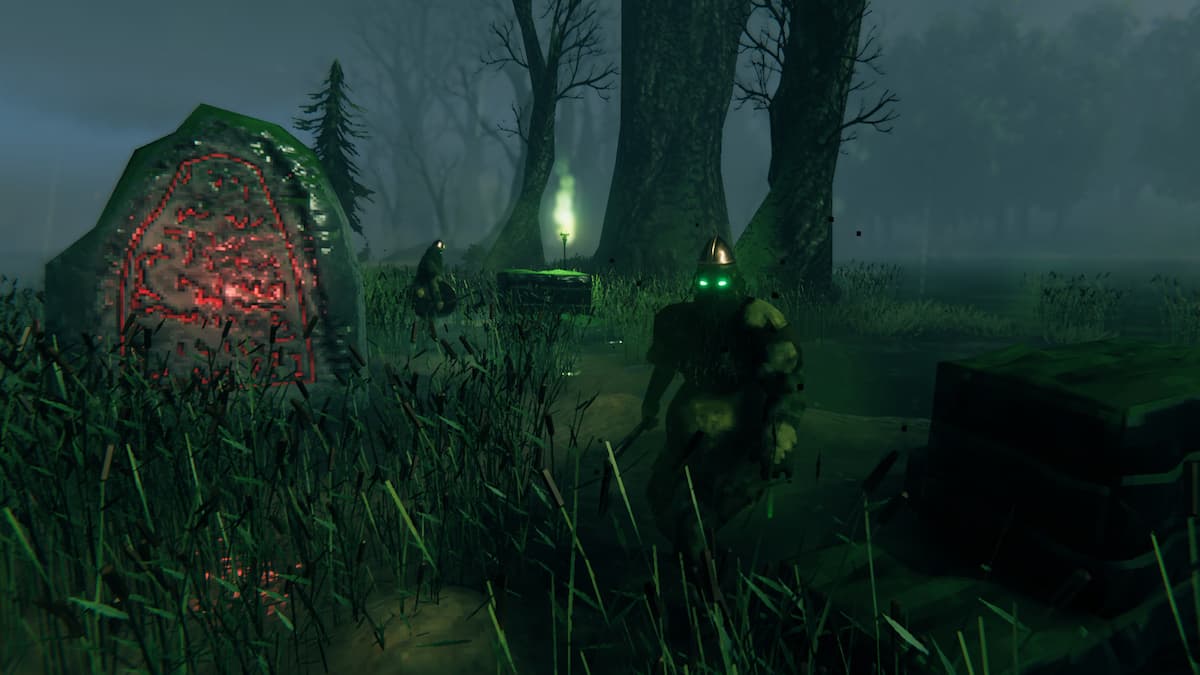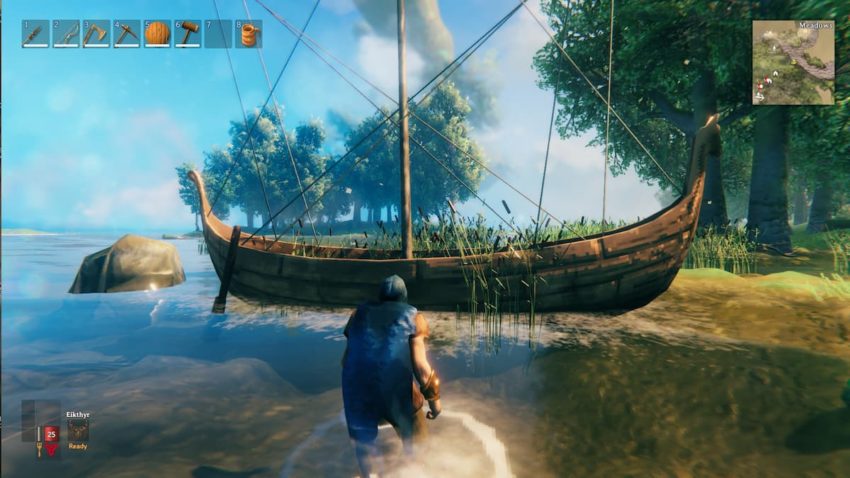Valheim – Is it any good? Worth the price? Should you buy? – Early Access impressions
The Viking fantasy world you always wanted to settle in and explore.

Image via Iron Gate Studio
When you initially wake up in Valheim at the center of several stones, you’re provided the basic tutorial you expect from most games, especially in the survival genre. You learn how to harvest basic resources, how to eat, how to survive, and how to build a shelter. The Valheim tutorial doesn’t teach you how deep each of those systems is and how much more diverse they become as you discover new biomes in your world. The level of depth is gratifying for those who stick around and forge a path through Valheim. Everything feels like a fun experience, even when you’re repeating the same actions of hammering copper ore out of the ground and running it back home.
It’s Swedish developers Iron Gate Studio’s first game, and we can safely say they’ve knocked it out of the park.
What is Valheim?
Valheim is a survival game that looks like a world generated from Runescape, but the developers wanted to make something closer to Minecraft. The graphics are slightly pixeled enough not to look entirely high resolution, and it doesn’t force your machine to use all of its internal processes, but it’s beautiful in its own way to stand out from other games you’ve played in this genre.

You are a Viking warrior chosen by Odin to survive in Valheim and rid it of the five Forsaken, enemies of Odin who he has not wiped out. It is your duty to purge them from Valheim, and if you do, you will be chosen to ascend to Valhalla, a Norse mythology location in Asgard, a hall full of the best warriors chosen by Odin to eat, drink, and fight as much as they like. But they must do it until Odin calls them to battle in Ragnarök, the end times.
While battling the Forsaken bosses and defeating them in combat is your primary goal, you’ll also have to survive off the land. This means harvesting food, hunting animals, creating a shelter, and crafting various weapons, armors, and tools to prepare for these deadly encounters. You won’t learn all of the crafting recipes at once. You have to discover certain ingredients, typically dropped by some of the more challenging enemies and creatures inhabiting the many biomes in Valheim.
The Forsaken are basically checkpoints, and defeating them is a way to signal you’re ready to progress to the new area by giving you a new tool. For example, the first Forsaken boss you battle, Eikthyr, is a large Elk that fires lightning from its antlers. Upon defeating it, Eikthyr drops a resource called hardened antlers, and it gives players access to pickaxes, allowing players to harvest minerals to begin smelting and using a forge.
Is Valheim good?
The formula is excellent. You’re repeating the process of finding new ingredients, building new crafting stations and crafting station upgrades, building new upgrades for your favorite gear, and exploring. Valheim features a massive, massive map. There’s a lot of water between these areas, and boat travel becomes an essential process all players need to invest in when they want to break away from the starting point.
What makes the repeatable process so good is that you start from the ground up in numerous locations. When you first start, you’ll likely find a good place to lay down your roots, craft your first home, and then make it your base of operations. After defeating the first, and maybe even the second, boss, you’ll explore your entire area and find that there’s a more significant island across the ocean. When you arrive there on your boat, you have to start over and build a new base from the ground up. There’s a system that allows you to create portals to your two bases, but you cannot take precious metals or ore through them, so every new location becomes a mining outpost.

You can make as many portals as you want, allowing you to explore every part of Valheim you discover. Those unique bases you make can have different personalities, each reflecting how you colonized it. Some sites could be more dangerous than others based on the nearby biomes, but what’s really compelling is the way that precious resources you might have overlooked become useful again, meaning you want to return to starting areas. You might discover a brand new recipe that requires two ingredients from a new biome, but there’s something you need from the starting area, so you’ll backtrack or find another one on a new part of the map.
It doesn’t feel like when you’re bouncing around from region to region, you forget about the previous ones. You always want to repeat those areas. They continue to feel relevant, and that makes exploring the entire map important in Valheim. Exploration feels good and rewarding, especially when you’re traveling across the large gaps of water, searching for somewhere new to settle. The repetition feels good, and it all clicks together.
Is Valheim worth the price, and should you buy it?
Valheim costs $20 on Steam. For $20, I’ve been playing the game for nearly 60 hours, and I’m still working our way to combating the third Forsaken boss. My group of friends and I have constructed several networks of portals, making little outposts across our world, and we still feel like there’s so much to explore. We can’t get enough of the exploration and continue to find ways to survive in the harsh environments presented to us.

Despite Valheim being in early access, it doesn’t feel like it is. If this is the start for Iron Gate Studio, we cannot wait to see what else they have in store through the next stages of their development process. Now is the time to get into Valheim, and it’s only going to continue expanding from there. Just a little over a week following its release, Valheim has passed the one million copies mark. We expect that number to grow as additional content, and the developers’ creativity can expand.